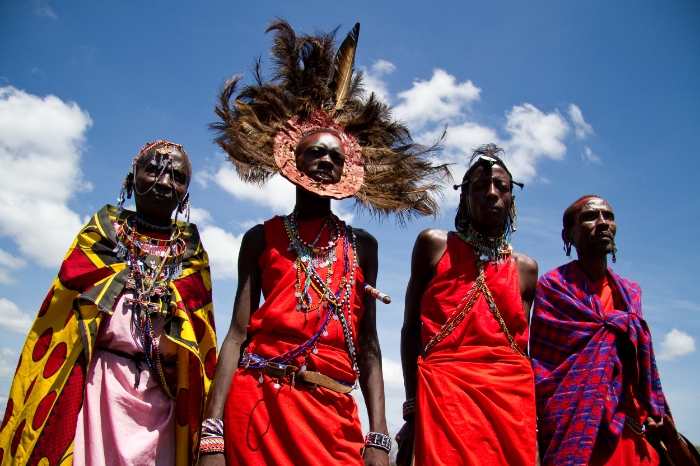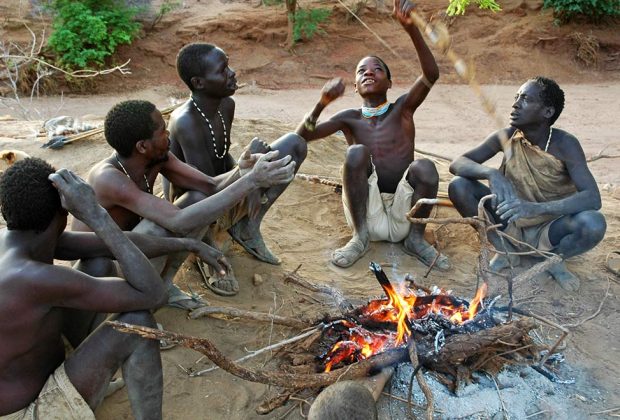Be Part of The Experience
Tanzania has a long history dating back eons of time. The Pliocene hominid fossils date back 6 million years ago. The Homo genus was found near Lake Olduvai and can be seen on display in the Olduvai Gorge Museum, near Ngorongoro Crater.
The mainland of Tanzania was formerly Tanganyika and became independent in 1961. The Zanzibar Archipelago became independent in 1963. Then, in 1964, the two entities merged to form the United Republic of Tanzania.
The current population of Tanzania stands at 56 million. There are around 120 ethnic, linguistic, and religious groups. There are over 100 different languages spoken, with Swahili being the national language. Around 10% of Tanzanians speak Swahili as a first language, and 90% speak it as a second language. All Tanzanians are assigned a tribe, which is determined by their father’s tribe. Each tribe has its own customs and way of life. People may choose to live a more traditional way of life, especially in rural areas.
Tanzania People are Heaven
For those interested in experiencing a new culture, we have some exciting Tanzania Cultural Tours opportunities. One tribe is the Maasai. They are known for herding livestock (cows, goats, and sheep) and living a traditional way of life. They tend to live in small villages (called bomas), surrounded by a wooden fence. The traditional house is made of wood, mud, and cow dung. The Masaai can be identified by their style of dress, which is usually bright red and/or blue clothing. As of 30 years ago, to become a warrior, young men were required to kill a lion. This is no longer allowed as the lion is protected. But their culture is still strong.
Cultural tourism programmes are beneficial to everyone – the tourists get a unique, unforgettable experience, the local people generate income and improve their standard of living, and both parties gain a valuable understanding of another culture which will last long after the visitors have returned home. Most cultural tourism programmes are located near the main thoroughfares of the principal tourist destinations, making a cultural addition to a safari easy to arrange. Guides are local people born and raised in the area, well-trained in their jobs and proficient in English. Whether you spend the morning in a Maasai boma or trek by camel up a local summit, stopping to learn about traditional plants and tribal stories, a cultural tour is a must–do for anyone waiting to see the rich life of the Tanzanian people
Different areas you can explore in Tanzanian culture
Monduli Juu
Monduli Juu is a cluster of four small Maasai villages, namely Emairete, Enguiki, Eluwai and Mfereji. Emairete consists of a wonderful crater where, in former times, the cattle of only medicine men were supposed to graze. Enguiki village is named after its famous pastures. Eluwai is a village called after the trees where certain small ants have their habitat and that are whistling in the wind. Mfereji is a village down the escarpment that, a long time ago, develop from a place where a South African lived who pulled a ditch down to bring water from the Monduli Mountains.
Mulala
Mulala is a typical Bantu village. It is nestled on the green southern slopes of Meru, just
below the alpine forest reserve and a few kilometers from the border of Arusha National Park. The village is about 30km from Arusha Town, and is located to the north side of the Moshi-Arusha highway.
Tours to Mulala include crisscrossing coffee and banana farms, and inspecting small women’s business societies that engage in income-generating projects such as cheese making, chilli-growing, and tailoring. The women are happy to show visitors how coffee is traditionally processed and how some traditional African food is prepared.
Tengeru
Tengeru is 13 kilometres from Arusha town off the Arusha-Moshi road. Tengeru offers a glimpse of the culture of the Meru people and their farming methods including tracing the preparation of coffee right from the farm to the table. Tengeru also offers nature walks along the Mountain Rivers and an excursion to Lake Duluti on the lower slopes of Mount Meru The organizers of tours have also special programmes to visit families with disabled children and the local village primary schools.
Ilkiding’a
IIkiding’a is on the higher slopes of Mount Meru about 7 kilometres north of Arusha town and offers a view into the culture of the Wa-Arusha tribe. Walks across these villages provide impressive viewpoints and include climbing hills and having riverside picnics. Tours of IIkiding’a include a visit to craftsmen making the traditional Maasai swords and calling at traditionally built homesteads to get an idea of how extended families live together.
Ngiresi is a village of the Wa-Arusa tribe and offers guided tours to the lush slopes of Mount Meru Tours to Ngiresi highlights the struggle of the people to develop and so includes visits to development projects like soil conservation, migration, cross-breeding, and the use of bio-gas. Ngiresi is about 7 kilometers from Arusha town.
Ilkurot
IIkurot is about 20 kilometres west of Arusha Town and is a place for both the Maasai and the Wa-Arusa. Tours of IIkurot include a visit to a Maasai boma (the traditional Maasai enclosure/village) to see the traditional houses and lifestyle of the Maasai in transition from nomadic to include programmes for watching Maasai dances and meeting women’s handicraft groups making traditional Maasai ornaments.
Osotwa is about 2 kilometers from the suburb of Ngara Mtoni, west of Arusha town, and off the Arusha-Nairobi Road. Osotwa offers safaris to traditional Wa-Arusha-Maasai homesteads and visits to colourful weekly open markets. Osotwa also offers a climb to Shambasha Hill, an old volcano with natural forest rich with birds, butterflies and monkeys and the privilege to enjoy a wonderful view of Arusha town.
Mkuru
Mkuru is a Maasai settlement on the northern side of Mount Meru where they have gone a step beyond the traditional cattle-keeping culture by beginning to keep camels. Mkuru therefore offers camel safaris in addition to bush walks and hill climbing and visits to Maasai homesteads.
From Arusha, the scenic route to Mkuru Juu means “Higher Monduli;” it is a cool, picturesque, green plateau standing in the middle of the usual low Maasai plains. A visit to Monduli offers a “medicinal” tour to see the herbs and plants of Maasailand that are used in traditional medicine and to enjoy panoramic views of the Rift Valley, the active volcano Oldonyo Lengai, and Lake Natron.
Longido
Longido offers a walking safaris through the Maasai plains and a climb of the impressive Longido Mountain (2690m) through dense natural forest. A tour of the extensive plains surrounding the mountain features an insight into the traditions of Maasai culture and offers the opportunity to see some of the rare birds and animals of the bush. Longido is about 80 kilometers north of Arusha on the road to the Namanga border crossing.
Machame
Machame is to the north of Arush-Moshi road and on the slopes of Mount Kilimanjaro on the approach to Moshi. It is about 50 kilometres from Arusha to the junction to Machame, and a further 14 kilometres from the junction to Kyalia, the center of cultural tourism in Machame. Machame is a mosaic of beautiful valleys, gorges, rivers, waterfall, and farms and is home to the Bantu Chagga people. Machame offers tales of chagga legends, forest hikes and visits to chagga homesteads.
Mto wa Mbu
Mto wa Mbu is situated on the way from Arusha to the great national parks of northern Tanzania, which including Ngorongoro and Serengeti. It is a green oasis just at the foot of the rift valley and bordering to Lake Manyara. A visit to Mto wa Mbu includes farm tours, country walks and a view into the culture of many different tribes that have migrated to the area but have retained their tribal way of life.
Book Your Tanzania Cultural Tours with Olaitoriani Expeditions
Olaitoriani Expeditions offers an exciting and thrilling experience with every safari. From the cultural tours in Maasai villages to serene gateways in Zanzibar, we are committed to creating unforgettable memories during your time in Tanzania. Book your Tanzania cultural tours with us today and receive a personalized itinerary tailored to your specific needs.







